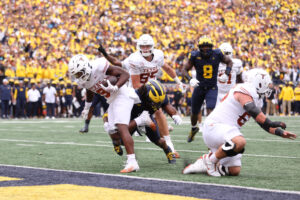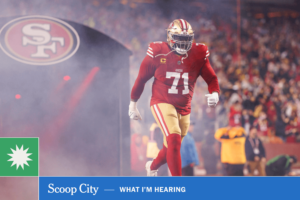Anew university lecturer will tell you that it is an uphill battle to attract students to a morning lecture. But even the most babbling fresher will surely be enticed by a physics lesson from Albert Einstein or a design masterclass from Coco Chanel.
This could soon be the reality for UK students as some universities start beaming in guest lecturers from around the world using the same holographic technology used to bring dead or retired singers back to the stage.
Loughborough University, the first in Europe to explore the technology’s applications, plans to use it to bring in sports scientists from the Massachusetts Institute of Technology (MIT) to teach fashion students how to create immersive shows, and to test management students about navigating difficult business situations.
Prof Vikki Locke, the director of undergraduate studies at Loughborough Business School, said students “absolutely love” the technology and beg for selfies with the gadget. They would prefer “a guest speaker from industry beaming into a classroom than a 2D person on the wall”, she added.
Zoom calls, she said, made students feel like they were watching TV … there was a distance. A holographic image is much more engaging and real for them.”
The technology will be formally introduced into the curriculum in 2025 after a year of experimentation.
The box-based holographic units are sold by LA-based Proto, whose customers include companies such as BT and IBM, where they are used in meetings to reduce the need for corporate travel. Proto also works with fashion retailer H&M in Stockholm to make interactive product displays.
David Nussbaum, who founded Proto four years ago after working on dead celebrity holograms, said his company could soon bring some of the 20th century’s greatest thinkers back from the dead.
He said: “Proto has the technology to project an image of Stephen Hawking, or anyone, and make it look like he’s really there. We can link it to books, lectures, social media – anything he was attached to, any question, any interaction with him. An AI Stephen Hawking would look like him, sound like him and interact as if it were him.
“It’s awesome, it’s jaw-dropping, I was shocked at how incredible the interactions are. AI is part of our life, whether people like it or not.” He added that his firm’s ambition was to prove “you don’t have to be an eccentric millionaire or a celebrity to have a hologram”.
Gary Burnett, a professor of digital creativity at Loughborough University, said: “Different immersive technologies and AI are the new forms of literacy. Students need to understand what it means to use them, to be in those worlds, to experience it, to interact… and these are all things they are going to need for their future careers.”
to newsletter promotion
The university’s pro-vice-chancellor, Prof Rachel Thomson, said the technology could help the university achieve its sustainability strategy by reducing the need to fly in guest speakers and by facilitating international research collaborations, as well as by increasing the amount of materials students build. prototypes in engineering, design and the creative arts.
They can also allow a lecturer to demonstrate a complicated piece of equipment such as an engine more easily than via a video call.
Nussbaum said businesses and large institutions such as universities were the first step in his firm’s plan, but he hoped to roll out smaller units costing less than $1,000 (£800) within the next 18 months, a shrunken image will emit what he compares. to “Wonkavision” in Roald Dahl’s Charlie and the Chocolate Factory.
The technology’s AI capabilities mean an avatar can be created that looks like anyone in the world, he added, although he noted that this could pose legal complications.






